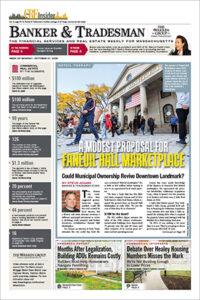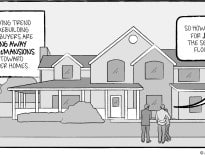The past decade has been a wild ride for the Greater Boston housing market and it’s looking increasingly likely that 2017 will continue down the same road.
One of the most fascinating things about the residential real estate market are the many and diverse forces that push upon it.
So many factors affect that amorphous concept, “the market.” Economic factors like interest rates, unemployment, the stock market’s performance, equity and so many more ebb and flow continuously; what impacts will they have on our small corner of the world? The local economy, infrastructure investment, land costs, wages – the list clearly goes on – all impact the real estate market closer to home.
Beyond even those factors are the smaller and more personal impacts. The real estate market is so much more than figures on paper. It is the livelihood of thousands of the commonwealth’s citizens. And then, of course, the housing market is just that – it is people’s homes. Homes are important beyond mere shelter; they are also a deep emotional tie. We take care of our homes; we cherish them and protect them.
All of these factors – economical and personal – come together to present an incredibly unique challenge when attempting to predict the future of “the market.” Furthermore, given how very strange the past few years have been, it’s almost impossible to do accurate comparisons year-over-year.
Perhaps the best illustration of this is in the number of foreclosure petitions each month as tracked by The Warren Group, publisher of Banker & Tradesman. Petitions began to climb rapidly in the middle of 2014 – a reaction, so the experts said, to abnormally low monthly filings in the preceding 18 months. That spike seems to have leveled off mid-2016.
Which is all fine and good, but what does that mean? What’s a “normal” number of foreclosure petitions to file in a single month, or a given year? Was it 2005 or 2006, before the world fell off a cliff? It certainly wasn’t 2007, when nearly 30,000 foreclosure petitions were filed in the state of Massachusetts, the most in a single year since The Warren Group began tracking those figures. And it wasn’t 2013, when barely more than 5,000 petitions were filed all year.
Similar stories can be found in the sales figures. Statewide, at least on paper, it all looks great – while the figures bounced around month to month, overall for the year, sales are up for both single-families and condominiums. But as we have reported, there are parts of the state that are breaking median sale price records every week, while others have yet to come close to their former peaks.
Inventory continues to tighten – except where it doesn’t. Luxury homes languish, but penthouses in Millennium sell for eight figures. Interest rates are rising. Our president-elect is threatening to do away with mortgage deductions. Houses are increasingly expensive and farther away from the job centers. Our infrastructure investment is a joke.
It’s a new year in Boston, the Bay State and the world. Only some of what will occur in the housing market can be anticipated. But it’s definitely not going to be boring.






